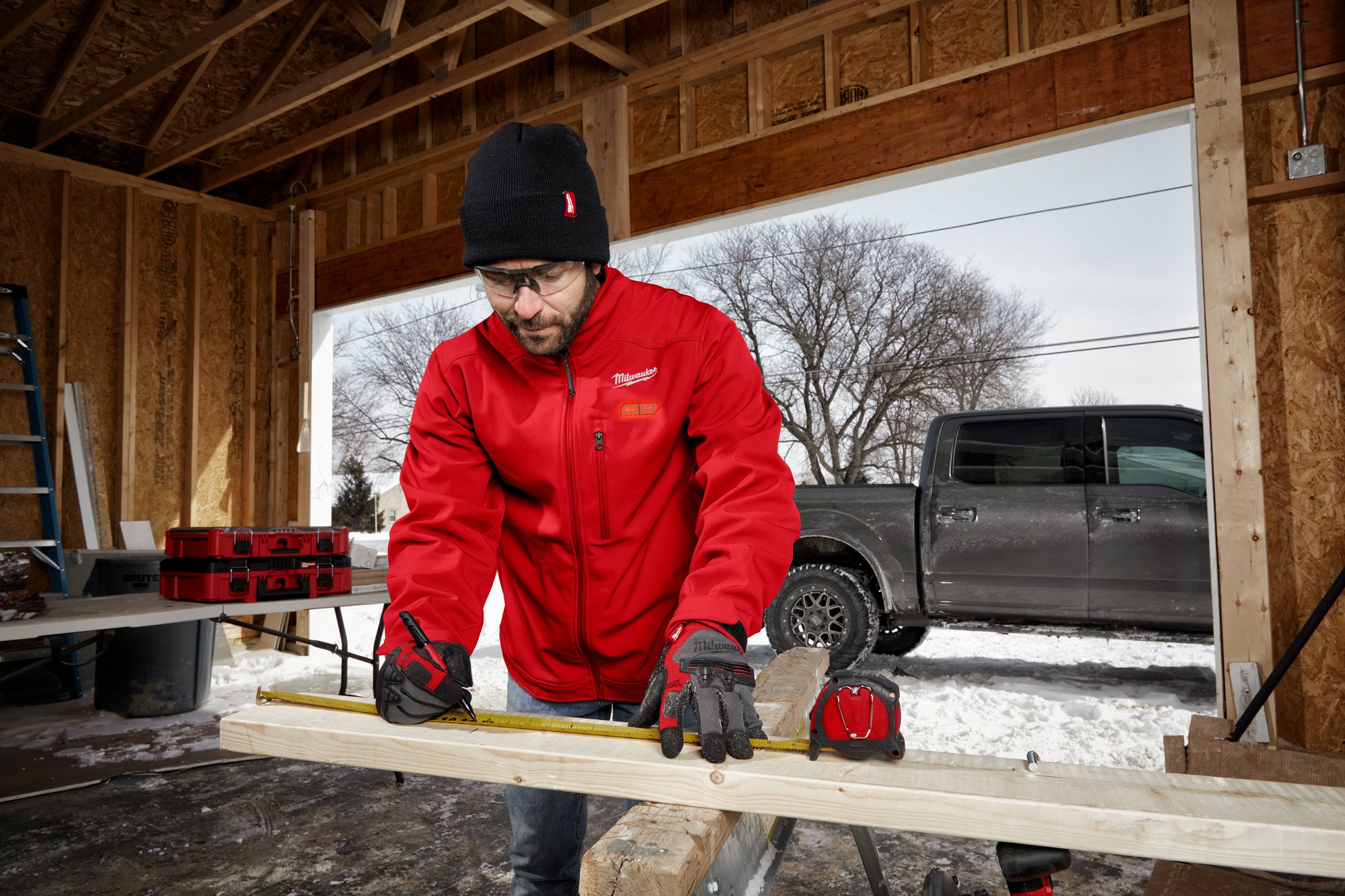
With winter fast approaching, we must prepare ourselves. Will it be a wonderland? Or a “Snowmageddon,” a humorous expression all too familiar in the Midwest, and particularly here in Wisconsin, that has even led to aptly named consumer goods becoming available for the coffee connoisseur looking to weather looming storms, brooding over a hot brew.
Britt Daniel, Texas native and front man of indie music’s darling, Spoon, warns of these winter woes. in his distinctively searing vocal delivery, during the first few lines of the catchy, if idiosyncratically spelled, tune, “Rhthm & Soul,” he pleads: “Remember, the winter gets cold in ways you always forget.” Perhaps prophetic, let’s not forget but remember last winter, that historic, fateful February—indeed, it was the winter of their discontent, where Texans were tested in ways no one will ever forget, some 54% of electrical grid blackouts leaving 4.3 million homes and businesses without power amid record-setting cold temperatures in the lone star state.
As we approach worsening weather conditions, it’s crucial to reflect on the occupational safety and worker health in our industry. Bearing them in mind, in this article, we’ll want to answer a couple important questions regarding cold weather construction:
- Should construction stop in winter?
- What are the key cold weather risk factors contractors face in winter?
- How can contractors combat them?
- What projects can be safely done in winter?
Does Construction Stop in Winter?
While traditional wisdom might have you delay breaking ground on new projects, contractors know that, while not ideal, winter projects are possible, and that doing cold-weather construction work has its ups and downs.
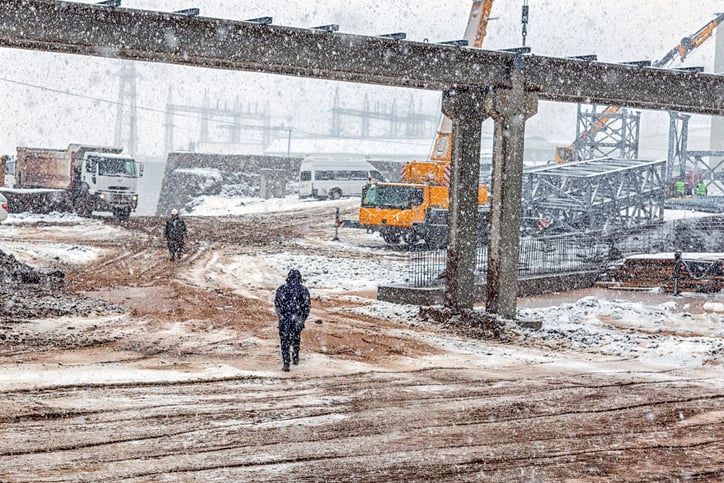
Pros of Building in Winter: Benefits of Cold Weather Construction
Despite the obvious challenges, there are still some clear benefits to winter construction:
- Possibly discounted prices from suppliers
- Low competition
- Fewer scheduling conflicts
- Easier permit application process (fewer applications mean yours will be reviewed and approved faster)
- Cost advantage – a savvy construction business owner might, for example, be able to pay less for labor while being justified to charge a premium to customers for completing work in harsher conditions.
Cons of Building in Winter: Disadvantages of Cold Weather Construction
There are some obvious caveats to winter construction projects.
Building a house, for example, may be theoretically possible, though it presents increased impediments, like making it more challenging for the construction and building inspector to do their job, or making it harder for the landscape designer to evaluate the property’s landscaping potential.
Building a foundation during the winter months also presents its own unique set of challenges.
Additional disadvantages of cold weather construction include:
Can You Pour Concrete in the Winter?
Pouring concrete in cold weather can be tricky.
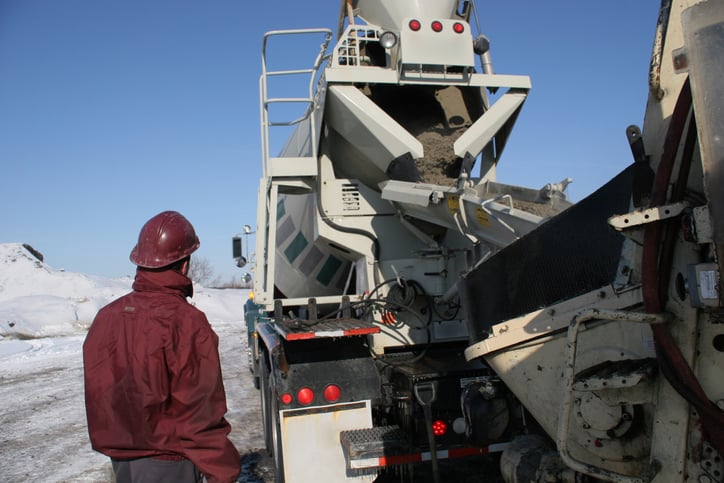
You might be wondering, what’s the coldest temperature you can pour concrete? In the American Concrete Institute’s (ACI) guide to cold weather concreting, they note that concreting poses a risk “when the air temperature has fallen to, or is expected to fall below, 40° Fahrenheit (4° Celsius).” They clarify “cold concrete” as “a period when the average daily ambient temperature below 40°F (5°C) for more than 3 successive days.”
It’s also important to pay special attention to meeting specification requirements about mixing concrete and to prepare the site with insulating and heating equipment—insulation such as blankets and boards, heating systems, unheated or heated enclosures. Ensure, too, that this equipment is onsite and in proper functioning order.
Winter Conditions in Construction: Risk Factors and Worker Safety Considerations
What are some of the risk factors contractors face during the winter season?
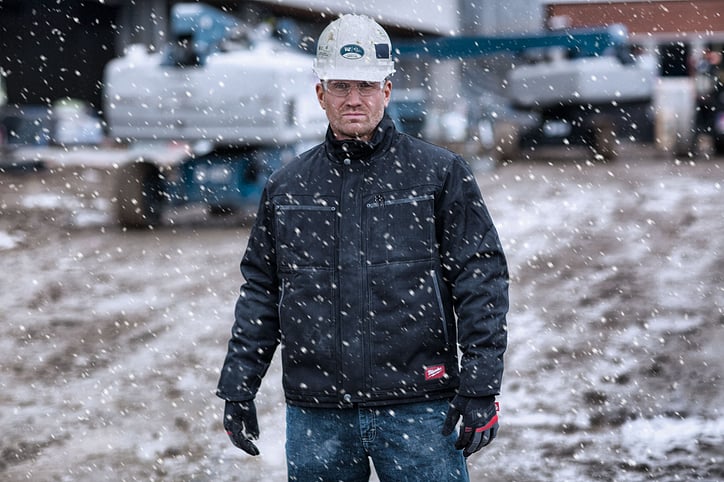
Cold Weather Risks
Typical hazards, outlined by the Occupational Safety and Health Administration (OSHA), can ensue due to:
- Worsened driving conditions
- Work zone safety incidents (particularly perilous for road workers)
- Vehicle breakdowns, dangers when using outdoor equipment like snowblowers
- Exhaustion, dehydration, back injuries, or even heart attacks brought on by outdoor maintenance like shoveling show
- Slips and falls on snow or ice
- Electrocution, fires, or being struck by crushed or falling tree limbs when repairing drowned or damaged power lines
Winter Heath Safety Considerations for Construction Workers
The U.S. Department of Health and Human Services defines “extreme cold” as near freezing temperatures or, “Whenever temperatures drop decidedly below normal” as wind speeds increase and “heat leaves your body more rapidly.”
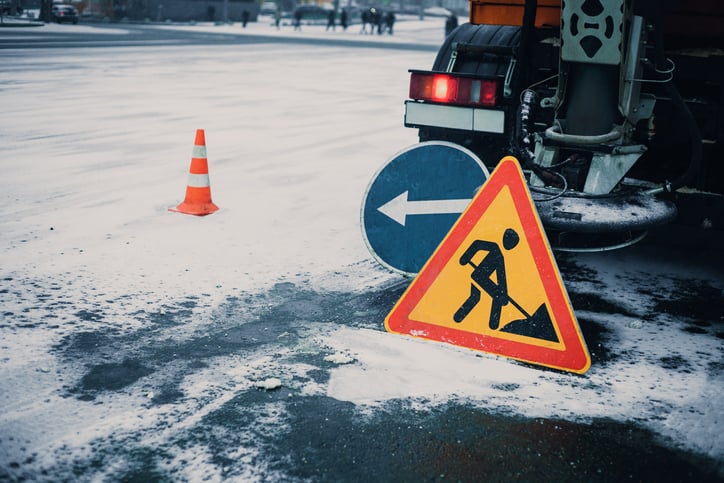
Extreme cold, aside from many of dangerous conditions like we discussed above, can lead to serious health problems and emergencies:
- Hypothermia, as defined by the Mayo Clinic, occurs when your body loses heat faster than it can produce it, causing dangerous body temperatures below the normal rate of 98.6° Fahrenheit (37° C). Hypothermia, they explain, occurs when your body’s natural temperature descends past 95° Fahrenheit and typical signs and symptoms will include shivering; slurred speech or mumbling; slow, shallow breathing; clumsiness or a lack of coordination; drowsiness or low energy; confusion or memory loss; and even loss of consciousness.
- Frostbite, as defined by the Mayo Clinic, is “an injury caused by freezing of the skin and underlying issues,” that occurs in stages:
- Frost nip – continued cold exposure leading to numbness in the affected area; as your skin warms, you may feel pain and tingling. However, frostnip doesn’t cause permanent skin damage.
- Superficial frostbite – refers to when slight skin color changes occur, while the skin may begin to feel warm. Superficial frostbite is a sign of serious skin involvement. If treated with rewarming at this stage, they explain, the surface of the skin may appear mottled, and “you may notice stinging, burning, and swelling,” while “A fluid-filled blister may appear 12 to 36 hours after rewarming the skin.”
- Deep (severe) frostbite occurs as frostbite progresses, affecting all layers of the skin as well as the underlying tissue. The skin turns white or blue-gray, while you’ll experience a loss of sensation of cold, pain, or discomfort in the area. Large blisters form 24 to 48 hours after rewarming, they explain, and tissue turns black and hard as it dies.
- Trench Foot, as defined by Healthline and also called “immersion foot syndrome,” is a serious condition resulting from your feet being wet for too long, causing blisters, blotchy skin, redness, and skin tissue that dies and falls off. First experienced by World War I soldiers who fought in cold, wet conditions in trenches (hence, “trench” foot) without extra socks or boots to keep their feet dry. Trench foot is caused by feet getting wet without drying off properly, commonly occurring in temperatures 30° to 40°, and if not treated it can lead to serious problems: severe blisters, gangrene or tissue loss, ulcers, permanent nerve damage, the inability to walk on the affected area, or even amputations.
It’s also worth stressing the importance of an inventory system to limit construction downtime. Ensure your construction manager, your tool manager, and the field team are all synchronized, and that tools, materials, and workers arrive at the same time, and aren’t waiting around in the cold to get what they need!
Safety Tips: Weather Winter Conditions with Cold Weather Clothing for Construction
As we’ve previously mentioned, construction is reportedly the #1 most dangerous profession across all industries, according to the U.S. Bureau of Labor Statistics. Critical safety hazards such as the Occupational Safe and Healthy Administration’s “Fatal Four” are even more heightened during winter.
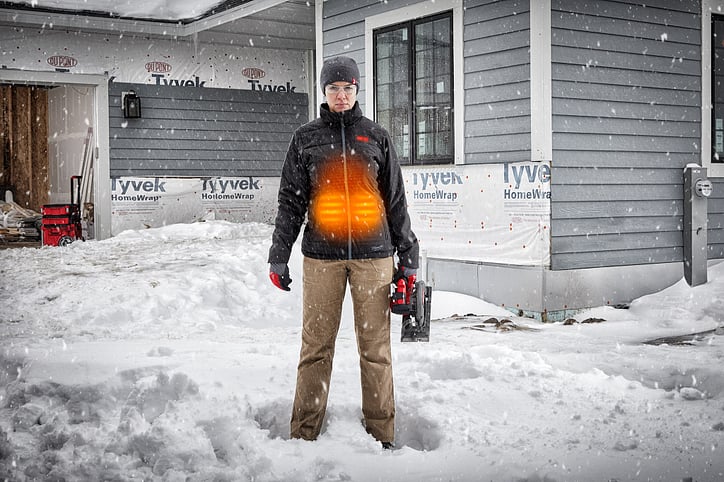
Establishing construction safety metrics, a winter construction safety plan, and following OSHA guidelines for construction personal protective equipment (PPE)—especially face, foot, and hand protection—with respect to extreme weather is of utmost importance to right-size for conditions.
- Cold Weather Construction Gloves Can Prevent Frostbitten Fingers: Insulated winter gloves that maintain warmth in the coldest outdoor conditions while providing best-in-class dexterity and grip performance ensure your hands will stay warm and provide all-day comfort. On the other hand, heated gloves may provide additional warmth.
- Wear Multiple Layers: Wearing multiple layers of warm clothing can help your body keep heat in. Combining layers with a heated gear element can offer maximal warmth. For your upper body, you may start with a base layer like a heavy-weight long-sleeve shirt. Over your base layer, you may consider adding a mid-layer like a hoodie, or possibly a heated hoodie. Over your base and mid layers, you’ll then wear a heavy winter jacket, ideally a work jacket built with heavy materials and reinforcements that will withstand harsh jobsite conditions and inclement weather, while also providing enough flexibility to make it comfortable to wear and conducive to productivity. You might also consider a heated jacket. For your lower body, you might consider wearing a pair of heavy-duty work pants or a pair of overalls, possibly a pair of wool thermal long underwear for keeping extra warmth in your legs, and ensure you wear a pair of high-quality winter boots (with superior grip) and some wool socks to keep yourself from experiencing early stages of trench foot like we discussed earlier.
- Don’t forget your noggin: You can wear a mid-weight balaclava under your hardhat that can keep cold air and harsh winds off your face and neck, and your head inside your hardhat warmer. Ensure your hardhat is ANSI/ISEA Type II rated to protect against both top and side impacts. It goes without saying: Use an abundance of caution while on outdoor jobsites with slick, unpredictable conditions. Stay safe and warm out there!
Weathering Winter: Ways Contractors Can Make Money in the Construction Offseason
If traditional construction projects don’t seem viable, there are a number of services construction professionals can offer to generate business during the cold months of the year:
- Snow removal: You may already have the equipment for plowing your company’s parking lot. Why not extend this luxury, a paved driveway, to your customers?
- Holiday decorating: Who wouldn’t want a top-notch holiday light display? Offering this kind of service in time for the holidays could be an easy way to offer a service to a loyal customer. Just ensure to be cautious and follow the above tips for providing these services in winter conditions!
- Interior remodeling: A remodeler can secure winter gigs as simple as repainting a basement to updating floors to adding insulation. Simple enhancements could include updating bathroom fixtures, or you may take on a kitchen remodel, refacing cabinets or putting in new appliances and upgraded countertops.
- Air conditioning and heating services: An HVAC technician can fix (or upgrade) faulty heating systems while a plumber can fix (or install a new) water heater to ensure a client doesn’t have to be without hot water in the coldest of months when it’s needed the most.
- Critical masonry repairs – While traditional masonry repairs are not intended to be completed under 40°, cold weather masonry construction work may be critically important to prioritize and not put off until spring. For example, when left in disrepair, winter precipitation like snow, sleet, and freezing rain could pour down a chimney and seep into the structure of the home, causing serious damage. Clients may also seek out a masonry contractor to repair their house’s chimney to ensure they can enjoy its warmth during the holidays.